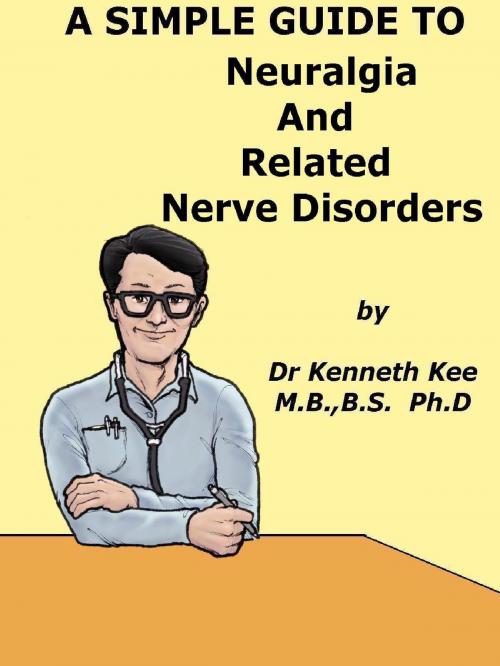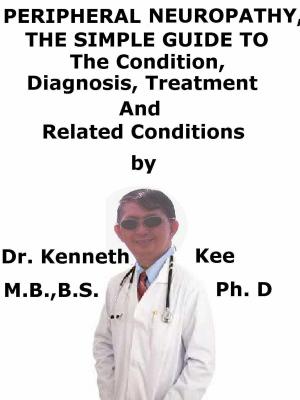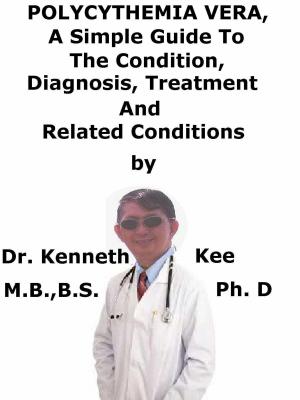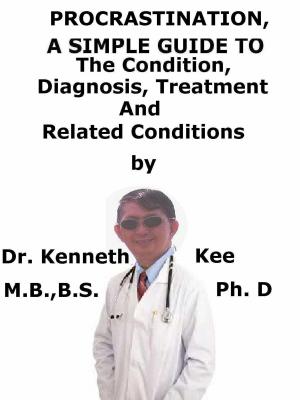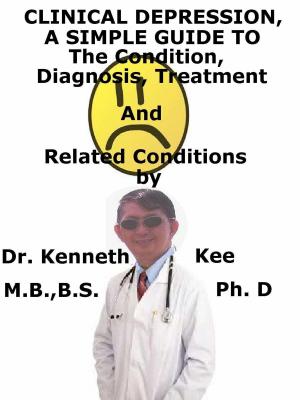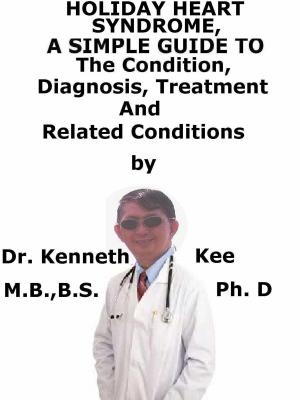A Simple Guide to Neuralgia and Related Nerve Disorders
Nonfiction, Health & Well Being, Health, Ailments & Diseases, Nervous System & the Brain, Medical, Specialties, Internal Medicine, Neurology| Author: | Kenneth Kee | ISBN: | 9781301605330 |
| Publisher: | Kenneth Kee | Publication: | April 27, 2013 |
| Imprint: | Smashwords Edition | Language: | English |
| Author: | Kenneth Kee |
| ISBN: | 9781301605330 |
| Publisher: | Kenneth Kee |
| Publication: | April 27, 2013 |
| Imprint: | Smashwords Edition |
| Language: | English |
Neuralgia
What is Neuralgia?
Neuralgia is any form of pain along a nerve.
What are the causes of Neuralgia?
-
Pressure on a nerve (intervertebral disc or trauma)
-
Inflammation of the nerve by herpes zoster virus ( shingles or herpes zoster)
-
Unknown cause (trigeminal neuralgia or idiopathic)
What are the symptoms of Neuralgia?
-
Pain is along the course or distribution of a nerve.
-
Pain is usually very severe and may be:
a. burning
b. sharp or lancinating
c. irritating
d. aching
e. unpleasant
f. lightning like
g. perversion of other sensation such as tingling, needle like
h. very often described as unlike other pain -
It is often worse at night
-
It is often made worse by pressure on the nerve and triggered by minimal stimuli such as light touch along the distribution of the nerve.
What are the common types of neuralgia?
- Sciatica
Sciatica is the pain in the back that radiates down the buttock and thigh down to the leg and foot often aggravated by sneezing or coughing.
Sitting on the painful side of the buttock makes it worse.
Bending or stooping to get some objects also made it worse.
Walking aggravates the pain intensity.
Straight leg raising test is definitely positive for pain and a confirmation of the sciatica.
- Herpes zoster
Herpes zoster or shingles can give rise to severe pain down one nerve.
It occurs in association with blister like rashes along the path of the nerve.
It is usually common in the elderly and in people whose body resistance is low.
Because of the blister rashes, sometimes scarring occurs over the skin rashes and there may be sensory loss.
The pain in the nerve is not affected by the sensory loss and can be so severe that some patients may attempt suicide.
Often the pain can persists for the rest of the patient's life.
- Trigeminal neuralgia
Trigeminal neuralgia is another pain which affects the fifth nerve in the face and can very painful.
I had one patient who could not stand the pain and had his nerve cut in order to find relief in spite of the drooping of one side of the face after the surgery by an ENT surgeon.
In spite of the operation, the nerve regenerates itself and the pain returns three years later.
I had to give injections of surgical spirit into the nerve before the pain finally stopped.
How severe is the pain of Neuralgia?
The pain is usually severe enough for the doctor to prescribe painkillers and special drugs like tegretol or gabapentin which reduce the inflammation of the nerve.
For some people the slightest touch or contact with clothing can cause unbearable pain.
How is Neuralgia diagnosed?
-
X-ray of the lumbar spine, teeth, skull and cervical spine
-
MRI of the skull, lumbar and cervical spine
-
Nerve conduction tests
How is Neuralgia treated?
In most cases Neuralgia clears on its own in a few weeks and seldom recurs.
Medical Treatment:
-
Treatment consists of painkillers,
-
Anti nerve inflammation drugs like tegretol and gababentin
-
Antidepressants
-
Anticonvulsants
Injections of Local anesthetic
- Local nerve block
Surgery:
-
Surgical transection of the nerve-usually recurrence cause more severe neuralgia.
-
In the case of prolapsed or herniated intervertebral disc pressing against the nerve, surgery may be required:
a. Laminectomy the prolapsed disc may be removed
b. Microdiscectomy
This surgery involved insertion of a titanium disc in place of the removed prolapsed disc.
TABLE OF CONTENT
Chapter 1
Neuralgia
Chapter 2
Trigeminal Neuralgia
Chapter 3
Sciatica
Chapter 4
Herpes Zoster
Epilogue
Neuralgia
What is Neuralgia?
Neuralgia is any form of pain along a nerve.
What are the causes of Neuralgia?
-
Pressure on a nerve (intervertebral disc or trauma)
-
Inflammation of the nerve by herpes zoster virus ( shingles or herpes zoster)
-
Unknown cause (trigeminal neuralgia or idiopathic)
What are the symptoms of Neuralgia?
-
Pain is along the course or distribution of a nerve.
-
Pain is usually very severe and may be:
a. burning
b. sharp or lancinating
c. irritating
d. aching
e. unpleasant
f. lightning like
g. perversion of other sensation such as tingling, needle like
h. very often described as unlike other pain -
It is often worse at night
-
It is often made worse by pressure on the nerve and triggered by minimal stimuli such as light touch along the distribution of the nerve.
What are the common types of neuralgia?
- Sciatica
Sciatica is the pain in the back that radiates down the buttock and thigh down to the leg and foot often aggravated by sneezing or coughing.
Sitting on the painful side of the buttock makes it worse.
Bending or stooping to get some objects also made it worse.
Walking aggravates the pain intensity.
Straight leg raising test is definitely positive for pain and a confirmation of the sciatica.
- Herpes zoster
Herpes zoster or shingles can give rise to severe pain down one nerve.
It occurs in association with blister like rashes along the path of the nerve.
It is usually common in the elderly and in people whose body resistance is low.
Because of the blister rashes, sometimes scarring occurs over the skin rashes and there may be sensory loss.
The pain in the nerve is not affected by the sensory loss and can be so severe that some patients may attempt suicide.
Often the pain can persists for the rest of the patient's life.
- Trigeminal neuralgia
Trigeminal neuralgia is another pain which affects the fifth nerve in the face and can very painful.
I had one patient who could not stand the pain and had his nerve cut in order to find relief in spite of the drooping of one side of the face after the surgery by an ENT surgeon.
In spite of the operation, the nerve regenerates itself and the pain returns three years later.
I had to give injections of surgical spirit into the nerve before the pain finally stopped.
How severe is the pain of Neuralgia?
The pain is usually severe enough for the doctor to prescribe painkillers and special drugs like tegretol or gabapentin which reduce the inflammation of the nerve.
For some people the slightest touch or contact with clothing can cause unbearable pain.
How is Neuralgia diagnosed?
-
X-ray of the lumbar spine, teeth, skull and cervical spine
-
MRI of the skull, lumbar and cervical spine
-
Nerve conduction tests
How is Neuralgia treated?
In most cases Neuralgia clears on its own in a few weeks and seldom recurs.
Medical Treatment:
-
Treatment consists of painkillers,
-
Anti nerve inflammation drugs like tegretol and gababentin
-
Antidepressants
-
Anticonvulsants
Injections of Local anesthetic
- Local nerve block
Surgery:
-
Surgical transection of the nerve-usually recurrence cause more severe neuralgia.
-
In the case of prolapsed or herniated intervertebral disc pressing against the nerve, surgery may be required:
a. Laminectomy the prolapsed disc may be removed
b. Microdiscectomy
This surgery involved insertion of a titanium disc in place of the removed prolapsed disc.
TABLE OF CONTENT
Chapter 1
Neuralgia
Chapter 2
Trigeminal Neuralgia
Chapter 3
Sciatica
Chapter 4
Herpes Zoster
Epilogue
